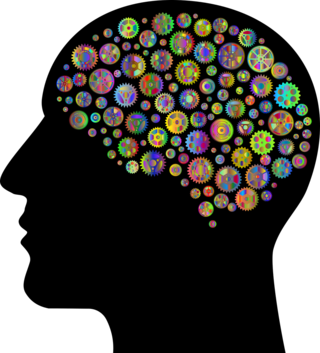Unconscious
It’s Not You, It’s Your Unconscious
Why therapy takes so long to work: Part three.
Posted June 18, 2019 Reviewed by Devon Frye
In Part One and Part Two of It’s Not You—It’s Your Unconscious: Why therapy takes so long to work, I explored how several mechanisms in our minds operate below the level of consciousness. I explained why in the book I recently co-authored—The Unconscious: Theory, Research, and Clinical Implications (to be published this Fall by the Guilford Press)—we called these processes normative, meaning that they are normal, motivated, and rational. Much like the laws of physics, they are not good or bad, full of conflictual impulses (like Freud’s unconscious), or self-destructive. They just are, operating in the brain every day of the week.
So far, I've talked about implicit learning and implicit memory (in Part One), and heuristics and affective primacy (in Part Two). Today, we add automaticity to the list and then put all of this together, explaining how the workings of these normative unconscious processes may result in therapy taking longer to work than we usually hope for—in other words, it's not because we are not trying hard enough.

Automaticity
Automaticity means that our brains perform all of the processes discussed in Part One and Part Two of this series automatically—that is, they perform them quickly, efficiently, and without any input from our conscious mind. It was William James, considered by many to be the father of American psychology (fun fact: he is also the brother of famous novelist Henry James), who first described the phenomenon of automaticity. He observed that when certain actions or processes are performed with some frequency and regularity, they eventually become automatic. We no longer have to exercise as much conscious control over their performance.
Once sufficiently rehearsed, they fade into the unconscious, so to speak. A good example of this is learning to drive. At first, you have to focus, remind yourself to put the key in the ignition, step on the brake, shift gears. But over time, you simply do this automatically—possibly even while paying attention to your child in the back seat.
Initially, it was thought that some processes in the mind are automatic and some are effortful. The only path to automaticity was to rehearse something long enough. However, today, we tend to think of aspects or layers of automaticity: intentionality, consciousness, and controllability, which can exist to varying degrees and in different combinations. We also know that there are automatic psychic phenomena that were never initially conscious (e.g. motivation, emotional regulation, behavior contagion). Maybe we think we are making a decision based on consciously available rationale (e.g., a car has better gas mileage) when in reality, our emotional mind is automatically choosing the red car because of a treasured childhood memory.
An important implication of automaticity is that relational patterns are carried out automatically. Frequently, my patients recognize that they are drawn to the same type of partner (“I always pick unavailable ones”) or tend to react to certain situations with prescribed responses (anger toward a boss, who is an authority figure, stemming from growing up with a controlling father). Studies by John Bargh, a leading name in the study of automaticity, have even shown that we tend to perceive negative emotions in others as a result of our own hostility, without being aware of it.
Automatic processes are also very difficult to change. Not only do they occur below the threshold of consciousness, but because they do, we do not know when, how, or even if they are being activated. To change automatic processes, we must both become aware of them and superimpose conscious, controlled, and very effortful corrective ones instead. This is very taxing for the mind, and also creates a paradox. In order to replace an automatic bias or judgment, for instance, we have to think of it and then consciously choose a different one. But even simply thinking of it activates it. So, for example, even if I try to convince myself, “I don’t really want ice cream; I should eat fruit instead,” the concept of ice cream is activated—thus requiring herculean effort to choose fruit. It turns out that the old psychoanalytic saying, "The unconscious does not know the word 'no'" is true after all, albeit here for different reasons.
In treating symptoms of depression, anxiety, and other mental health problems, as well as in changing relational patterns, therapists and patients are up against a huge (unconscious) challenge, which can take a long time and a significant amount of effort. Much conscious rehearsal is needed to change automatic thought patterns and behaviors—and even then, we tend to revert to them in moments of heightened stress, because the previous automatic go-to patterns are still so readily available.
The Normative Unconscious Processes in Therapy
All of this adds up to how we process information: automatically and effectively, focusing on the negative first for its evolutionary survival value. We use shortcuts—heuristics—to make inferences. We learn patterns, both internal and external (social), of emotions and relationships. And we do all of this unconsciously.
For example, Jenny (a patient discussed in Part One) learned early on that showing anger leads to severe punishment, so she learned to associate the first sign of anger (a muscle tensing, heartbeat increasing) with fear. Today, when angry, her mind resorts to experiencing panic, thus making her unaware of her own anger. This was adaptive in childhood as it saved her from corporal punishment—but in adulthood, it caused her to remain in a marriage wrought with conflict and unhappiness. Panic attacks prevented her from expressing anger and dissatisfaction, concealing her emotional needs.
The mind is, to a degree, invested in keeping the status quo. It is important to remember, however, that this does not mean that our brain/mind is “broken,” as Jenny worries. Nor is it trying to keep us in a less-than-optimal shape or sabotaging us. Automaticity, heuristics, implicit learning and memory, and affective primacy exist for a reason; they have evolved as adaptations to our environment. If we stopped to consider every stimulus entering our visual field or deliberated every factor that applies to making a decision, we would surely go mad from overstimulation.
The normative unconscious processes are not full of hidden eerie motivations, conspiring against us. They are simply trying to keep the status quo because, at some point in the past, it worked. It preserved your life or your, colloquially speaking, sanity. Perhaps isolating yourself is a go-to coping mechanism which leads to loneliness, but at a certain stage in your life, it was adaptive. Because it was adaptive, it became automatic. Newly learned ways of coping do not easily replace the old ones; rather they are learned "on top" of them—so when we are stressed out or experiencing emotional disturbance, we easily revert back to the old ways. For that reason, relapse is expected and, indeed, is a common occurrence. It is the norm rather than the exception.
New learning, in therapy, will have to entail much more repetition than initially thought. Simply being told about or even applying a new coping skill for several weeks or even months will not lead you to resort to said coping skill automatically when under stress. This is also why a self-help book, as a standalone intervention to improve your life, is likely to be ineffective unless combined with systematic and multilayered efforts. It’s like reading a book on how exercising will make you stronger; you actually have to do the exercises every day in order to recondition your body.
The goal of therapy, then, will be (to turn an old analytical principle on its head) to make the conscious unconscious, to automatize the new knowledge. This takes time and repetition. In addition, even at the end of therapy, it may be useful to schedule booster sessions or check-ins at less frequent intervals. They may serve as refreshers and reinforcers of new, hopefully newly automated, coping skills and relational patterns.
When therapy is progressing slowly, this does not necessarily mean that you have “unconscious resistances” in the sense that Freud conceived them, or that your brain is working undercover to sabotage you. It also does not mean you are not working hard enough! Therapy is an investment, requiring patience, perseverance, and consistency. Gains are gradual and incremental, but only then can change be long-lasting.
This article also appears at www.TraumaProfessionals.com
References
Weinberger, J. & Stoycheva, V. (in press). The unconscious: Theory, research, and clinical implications. New York: The Guilford Press.
James, W. (1890/1950). The principles of psychology. (Vols. 1 & 2). New York: Holt.
Bargh, J. A. (2017). Before you know it. New York: Simon & Schuster.




